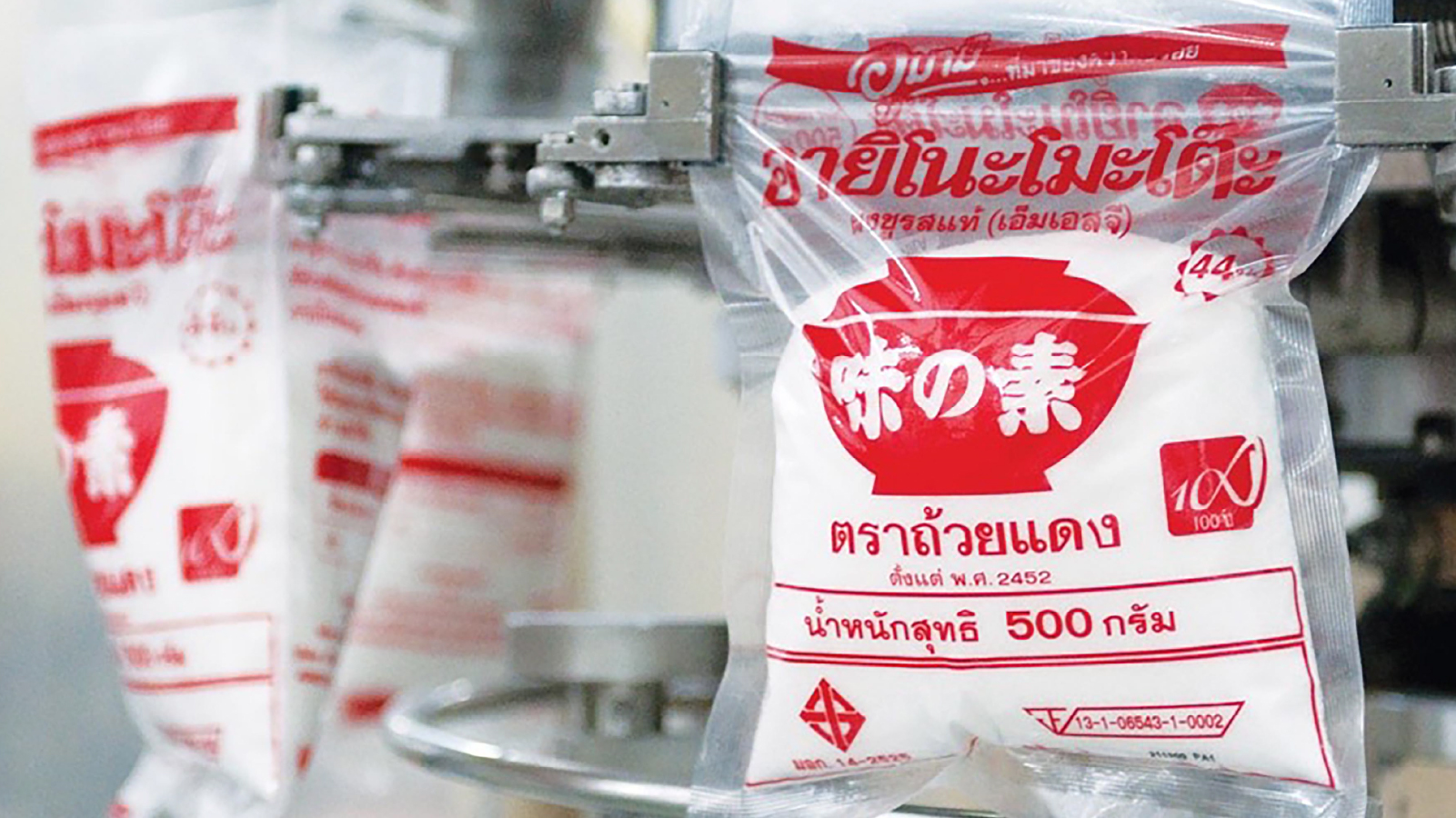When Ajinomoto Thailand, a regional subsidiary of a Japanese foods giant, decided to transform company-wide collaboration, they started in supply chain. Integrated sales, logistics, production, and purchasing plans in Anaplan have delivered better supply chain decisions and end-to-end visibility across six factories, resulting in a 10-day reduction in inventory levels, while daily reporting on key supply chain metrics improved agility and opened the door to new growth.
“By creating new ways of working with Anaplan, we reduced total inventory by 10 days.”Hiroshi Yoshida, Head of Supply Chain Management, Ajinomoto Thailand
10 days
removed from inventory improves cash flow and reduces warehouse operational costs
Daily
supply chain KPIs keep teams in six factories aligned on shared goals
Integrated
sales, logistics, production, and purchasing plans support better supply chain decisions
In 1908, professor Kikunae Ikeda of the Tokyo Imperial University isolated the source of umami, the savory taste found in many foods. More than 110 years later, Dr. Ikeda’s discovery lives on in Ajinomoto, the global food company he founded. In Thailand alone, Ajinomoto employs approximately 7,000 people in its fast-moving consumer goods (FMCG) operations and annually produces some 240,000 tons of seasonings and more than 300 product SKUs for the region.
To achieve ambitious goals, leaders at Ajinomoto Thailand and have developed digitization and process improvements that touch sales, marketing, logistics, and manufacturing at their six factories. “Our main challenge to achieving our goals is collaboration across our organization,” says Ritthirong Chankol, Supply Chain Strategist at Ajinomoto Thailand (position and title at the time of interview). “We had processes that relied on email, spreadsheets, and even telephone calls between sales, inventory, and production planning.” Because critical data resided in spreadsheets owned by individual teams and factory managers, gaining full visibility into Ajinomoto Thailand’s operations could be difficult — so decisions were sometimes based on experience and intuition more than data.
Iterative improvements
A team led by Hiroshi Yoshida, Head of Supply Chain Management (SCM) at Ajinomoto Thailand (position and title at the time of interview), was charged with improving the situation. “My goals for this project were to design a process and choose a data platform that would enable everyone to visualize data company-wide and make decisions quickly,” he says. Yoshida secured executive support for the project, noting that Ajinomoto’s corporate culture supports independence in regional operations. He then selected Anaplan and determined that SCM would be the right foundation for the digitization effort because it touches all six Ajinomoto factories in Thailand.
IT Director Poowanai Petchsanngam (position and title at the time of interview) participated in the project. “Our task in IT was to extract and integrate the data that feeds calculations in Anaplan,” he says. This took some effort because business operations and warehouse management systems varied from site to site, available data sometimes wasn’t exactly what the SCM team needed, and not all data was available in real time.
When these data issues were resolved, solution deployment followed a logical course. “With six different factories, we couldn’t do a big-bang rollout,” Yoshida notes. “What we learned from the first factory we quickly applied to the second, and so on.” Because communication challenges could be as difficult to overcome as technical issues, Yoshida enlisted and supported enthusiastic influencers at each site to help educate and motivate colleagues.
Anaplan partner QUNIE supported the Ajinomoto team throughout the project. “We were pleased to work on the successful SCM planning transformation for Ajinomoto Thailand,” noted Nobuhiro Okabe, Partner at QUNIE Thailand (position and title at the time of interview).
“Working with QUNIE was not like working with typical IT vendors,” Ritthirong recalls. “They learned about our business and helped us define what the solution should be. When we faced decision points along the way, QUNIE provided pros and cons for each option. As a project leader, this gave me confidence in our decisions.”
Enhanced overall efficiency
The Anaplan SCM solution delivered measurable results quickly. “We were able to define a centralized process that integrates the sales plan, logistics plan, production plan, and purchasing plan and helps teams make better supply chain planning decisions,” Yoshida says. “By creating new ways of working with Anaplan, we reduced total inventory by 10 days.” Reducing inventory improves Ajinomoto’s cash flow and reduces their warehouse operational costs. Carefully managed inventory also ensures that the factories maintain product availability.
Using Anaplan, the SCM team can balance supply and demand daily and quickly identify possible stock-outs. “Based on our production plan, we can visualize inventory requirements very precisely with Anaplan,” says Ritthirong. “We create daily inventory reports and communicate with various departments when they need to take action.” That action may include asking a factory to ramp up production, or asking the logistics team to move stock from factories to distribution centers. “This enhances our overall supply chain efficiency,” Ritthirong explains. The SCM team also uses data in Anaplan to build future operational strategies based on projected supply or production constraints.
Scalability and flexibility for the future
Hiroshi Yoshida, who led the project, has been impressed with the scalability of the Anaplan platform. “We focused initially on supply chain planning, but we moved quickly into sales and operations planning,” he says. “We also wanted to see the revenue and profit forecast based on our latest supply chain plan.” Ajinomoto Thailand’s IT team is working to automate data integration with the company’s warehouse management systems (WMS) and enterprise resource planning (ERP) systems to improve data timeliness and accuracy.
This supports Ajinomoto Thailand’s goals of having a flexible planning solution that can support the company as it changes and grows, Ritthirong says. “The Anaplan template for supply chain planning was easy to customize to fit our business requirements,” he says. “And if we develop a new strategy or new supply chain process in the future, we believe that Anaplan can be adapted to the new business requirements.”



